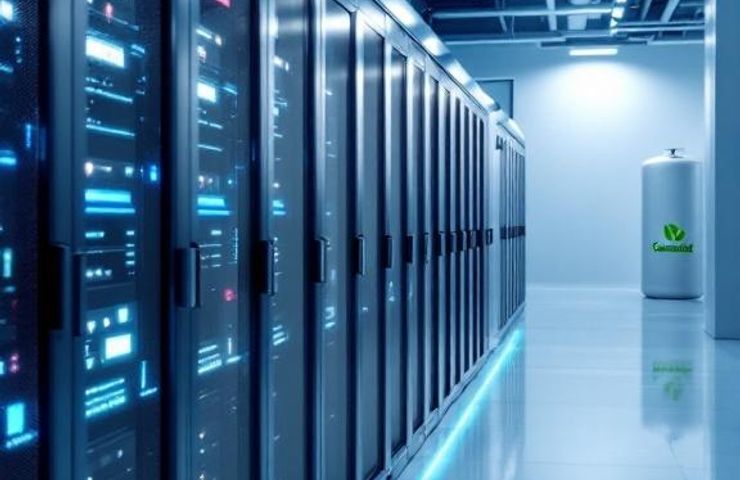
Plug Power’s Strategic Pivot towards Next-Gen Data Centers
November 24, 2025Plug Power’s Data Center Play
Plug Power Inc. has announced they’d signed a non-binding letter of intent with an unnamed U.S. data center developer. The plan? To trial hydrogen fuel cell-based backup and auxiliary power for mission-critical facilities, leveraging their growing hydrogen infrastructure. It’s a big strategic shift for the Latham, New York–based sustainable energy pioneer, aiming to bolster liquidity and diversify revenue amid ongoing profitability headwinds.
From Factory Floors to Server Farms
Ever since Plug Power opened shop in 1997, they’ve been best known for powering Amazon forklifts with hydrogen fuel cells. But as that market matured and government-backed programs didn’t quite pan out as fast as hoped, the team turned its gaze toward data centers. After all, that sector’s hungry enough to consume over 4% of global electricity by 2030—and it’s a prime opportunity for real industrial decarbonization amid the AI and cloud computing boom.
Liquidity Boost Through Asset Monetization
To shore up the balance sheet, Plug Power launched a $275 million liquidity initiative by putting some of its power infrastructure on the block—starting with that 30 MW-ready electric substation in Slingerlands, New York. Selling or leasing this grid interconnection hub should unlock cash, trim maintenance bills, and bankroll R&D and production scale-up for its zero-emission technology offerings, the GenSure and ProGen platforms.
Slingerlands Substation: A Hidden Asset
Covering nearly 50 acres, the Slingerlands site was set up for a hydrogen electrolysis campus—complete with multiple high-voltage feeders, on-site transformers, and built-in redundancies. For data center operators, it’s basically a plug-and-play grid connection that sidesteps the usual utility red tape, slashing project timelines and locking in reliable power delivery.
Why Data Centers Matter
Data centers around the globe are under growing pressure to boost resiliency, hit decarbonization targets, and wean off diesel generators. Enter hydrogen fuel cells. Plug Power’s GenSure (100 kW–2 MW) and ProGen (2 MW–multi-MW) units can fire up instantly, scale out modularly, and emit only water vapor—perfectly aligned with today’s zero-emission technology goals and the broader push for industrial decarbonization.
Technical Insight: GenSure and ProGen
Here’s the nuts and bolts: GenSure and ProGen systems convert hydrogen into electricity via electrochemical reactions in their fuel cell stacks. When paired with on-site hydrogen storage, they seamlessly kick in during grid outages, delivering clean, sustainable energy—no noise, no pollutants, no fuss.
Strategic Context and Competitive Landscape
Plug Power isn’t mapping this territory solo. Look at Bloom Energy: they’ve already installed fuel cells at Equinix and Oracle sites and teamed up with Brookfield on a $5 billion AI infrastructure venture. That kind of traction underscores growing confidence in hydrogen infrastructure for digital applications.
Industry Reaction
The market’s starting to buzz. Analysts at Wood Mackenzie predict that data center fuel cell deployments could balloon into a $2 billion opportunity by 2030. But it’s not all sunshine—critics note that fuel cell capex still trumps diesel gensets and lithium-ion batteries, and hurdles around hydrogen production and permitting stick around.
Collateral Impacts and Industry Momentum
If hydrogen fuel cells really take off, we could see electrolyzer costs plummet, green hydrogen production hit new highs, and a wave of jobs in construction and operations. At the same time, municipalities will have to update safety codes, and grid operators will need to coordinate more closely to integrate hundreds of distributed fuel cell units.
A Litmus Test for Hydrogen’s Role
Bloom Energy’s track record serves as a handy blueprint, but Plug Power faces the real test: can they scale GenSure and ProGen to that level? If they nail it, hydrogen fuel cells could truly cement themselves as a go-to sustainable energy and zero-emission technology solution for high-availability infrastructure.
Looking Ahead
Over the next 12 months, Plug Power has its sights set on a few key milestones: closing the Slingerlands substation deal, locking down binding supply agreements, and showing that their fuel cells can handle real-world data center loads both reliably and cost-effectively. If they pull it off, this pivot could upend how we power the AI-driven digital economy. But here’s the million-dollar question: will hydrogen fuel cells become the backbone of a cleaner digital future, or remain a niche lifeline for backup? Time will tell.


 With over 15 years of reporting hydrogen news, we are your premier source for the latest updates and insights in hydrogen and renewable energy.
With over 15 years of reporting hydrogen news, we are your premier source for the latest updates and insights in hydrogen and renewable energy.